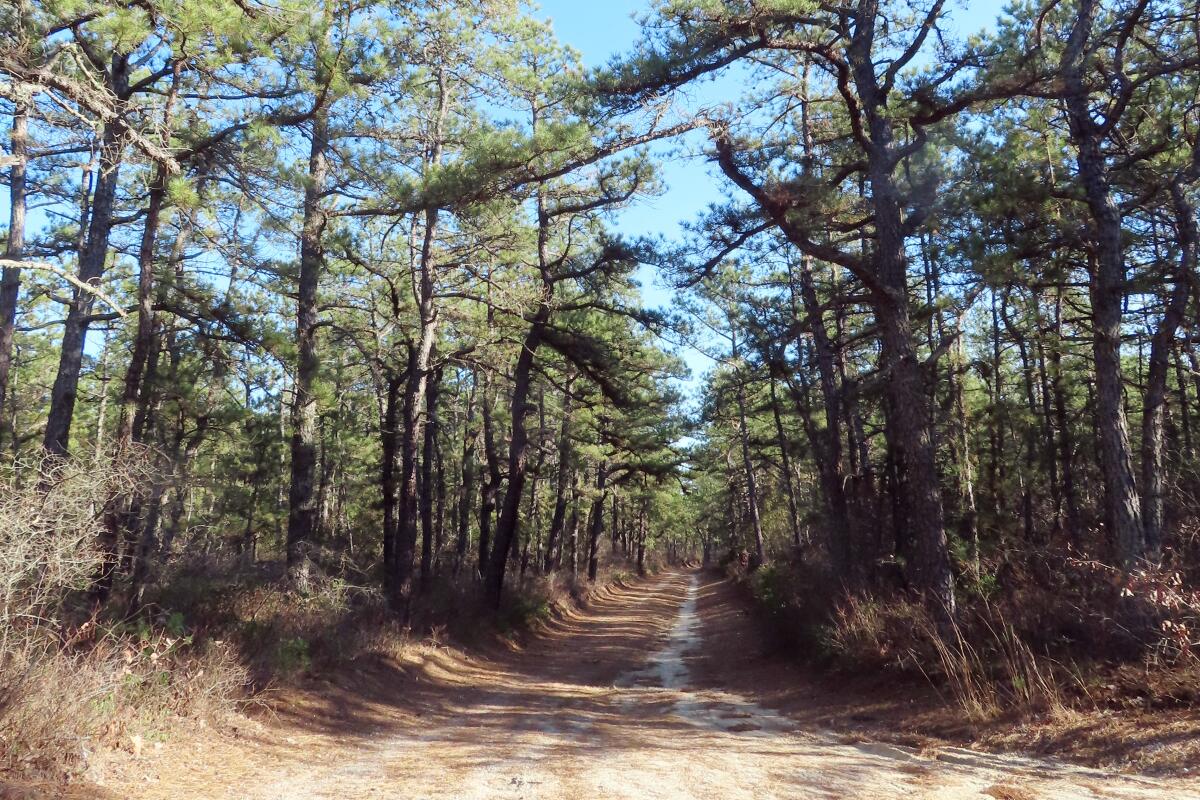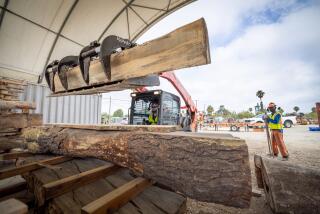Fire plan would cut 2.4 million New Jersey Pinelands trees

BASS RIVER TOWNSHIP, N.J. — Up to 2.4 million trees would be cut down as part of a project to prevent major wildfires in a federally protected New Jersey forest heralded as a unique environmental treasure.
New Jersey environmental officials say that the plan to kill trees in a section of Bass River State Forest is designed to better protect against catastrophic wildfires, and that it will mostly affect small, scrawny trees — not the towering giants for which the Pinelands National Refuge is known and loved.
But the project, adopted Oct. 14 by the New Jersey Pinelands Commission and set to begin in April, has split environmentalists. Some say it is a reasonable and necessary response to the dangers of wildfires, while others say it is an unconscionable waste of trees that would no longer be able to store carbon as climate change imperils the globe.
Foes are also upset about the possible use of herbicides to prevent invasive species regeneration, noting that the Pinelands sit atop an aquifer that contains some of the purest drinking water in the country.
And some of them fear the plan could be a back door to logging the protected woodlands under the guise of fire protection, despite the state’s denials.
“In order to save the forest, they have to cut down the forest,” said Jeff Tittel, the retired former director of the New Jersey Sierra Club, calling the plan “shameful” and “Orwellian.”
Pinelands Commissioner Mark Lohbauer voted against the plan, calling it ill-advised on many levels. He says it could harm rare snakes, and adds that he has researched forestry tactics from Western states and believes that tree-thinning is ineffective in preventing large wildfires.
“We are in an era of climate change; it’s incumbent on us to do our utmost to preserve these trees that are sequestering carbon,” he said. “If we don’t have an absolutely essential reason for cutting down trees, we shouldn’t do it.”
The plan involves about 1,300 acres, a miniscule percentage of the 1.1-million-acre Pinelands preserve, which enjoys federal and state protection, and has been named a unique biosphere by the United Nations.
Most of the trees to be killed are 2 inches or less in diameter, the state said. Dense undergrowth of these smaller trees can act as “ladder fuel,” carrying fire from the forest floor up to the treetops, where flames can spread rapidly and wind can intensify to whip up blazes, the state Department of Environmental Protection said in a statement.
A Pinelands commissioner calculated that 2.4 million trees would be removed by using data from the state’s application, multiplying the percentage of tree density reduction by the amount of land affected.
The department would not say whether it believes that number is accurate, nor would it offer a number of its own. But it did say “the total number of trees thinned could be significant.”
“This is like liquid gasoline in the Pinelands,” said Todd Wyckoff, chief of the New Jersey Forest Service, as he touched a scrawny pine tree of the type that will most often be cut during the project. “I see a forest at risk from fire. I look at this as restoring the forest to more of what it should be.”
Tree thinning is an accepted form of forest management in many areas of the country, done in the name of preventing fires from becoming larger than they otherwise might be, and is supported by government foresters as well as timber industry officials. But some conservation groups say thinning does not work.
New Jersey says the cutting will center on the smallest snow-bent pitch pine trees, “and an intact canopy will be maintained across the site.”
The state’s application, however, envisions that canopy cover will be reduced from 68% to 43% on more than 1,000 acres, with larger decreases planned for small-er sections. And scrawny trees aren’t the only ones to be cut: Many thick, tall trees on either side of some roads will be cut down to create more of a fire break, where firefighters can defend against a spreading blaze.
The affected area has about 2,000 trees per acre — four times the normal density in the Pinelands, according to the state. Most of the cut trees will be ground into wood chips that will remain on the forest floor, eventually returning to the soil, the department said.
Some environmentalists fear that might not be true, that felled trees could be harvested and sold as cord wood, wood pellets or even used in making glue.
“I’m opposed to the removal of any of that material,” Lohbauer said. “That material belongs in the forest where it will support habitat and eventually be recycled” into the soil. “Even if they use it for wood pellets, which are popular for burning in wood stoves, that releases the carbon.”
John Cecil, an assistant commissioner with the department, said his agency is not looking to make a profit from any wood products that might be removed from the site. But he said that if some felled trees “could be put to good use and generate revenue for the taxpayers, why wouldn’t we do that? If there’s a way to do this that preserves the essential goals of this plan and brings some revenue back in, that’s not the end of the world. Maybe you could get a couple fence posts out of these trees.”
Created by an act of Congress in 1978, the Pinelands district occupies 22% of New Jersey’s land area, is home to 135 rare plant and animal species, and is the largest body of open space on the mid-Atlantic seaboard between Richmond, Va., and Boston. It also includes an aquifer that is the source of 17 trillion gallons of drinking water.
“It is unacceptable to be cutting down trees in a climate emergency, and cutting 2.4 million small trees will severely reduce the future ability to store carbon,” said Bill Wolfe, a former department official who runs an environmental blog.
Carleton Montgomery, executive director of the Pinelands Preservation Alliance, supports the plan.
The group said opponents are using the number of trees to be cut “to [elicit] shock and horror,” saying that by focusing on the number rather than size of trees to be cut, they “are quite literally missing the forest for the trees. The resulting forest will be a healthy native Pine Barrens habitat.”
More to Read
Sign up for Essential California
The most important California stories and recommendations in your inbox every morning.
You may occasionally receive promotional content from the Los Angeles Times.










